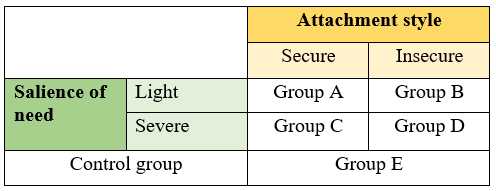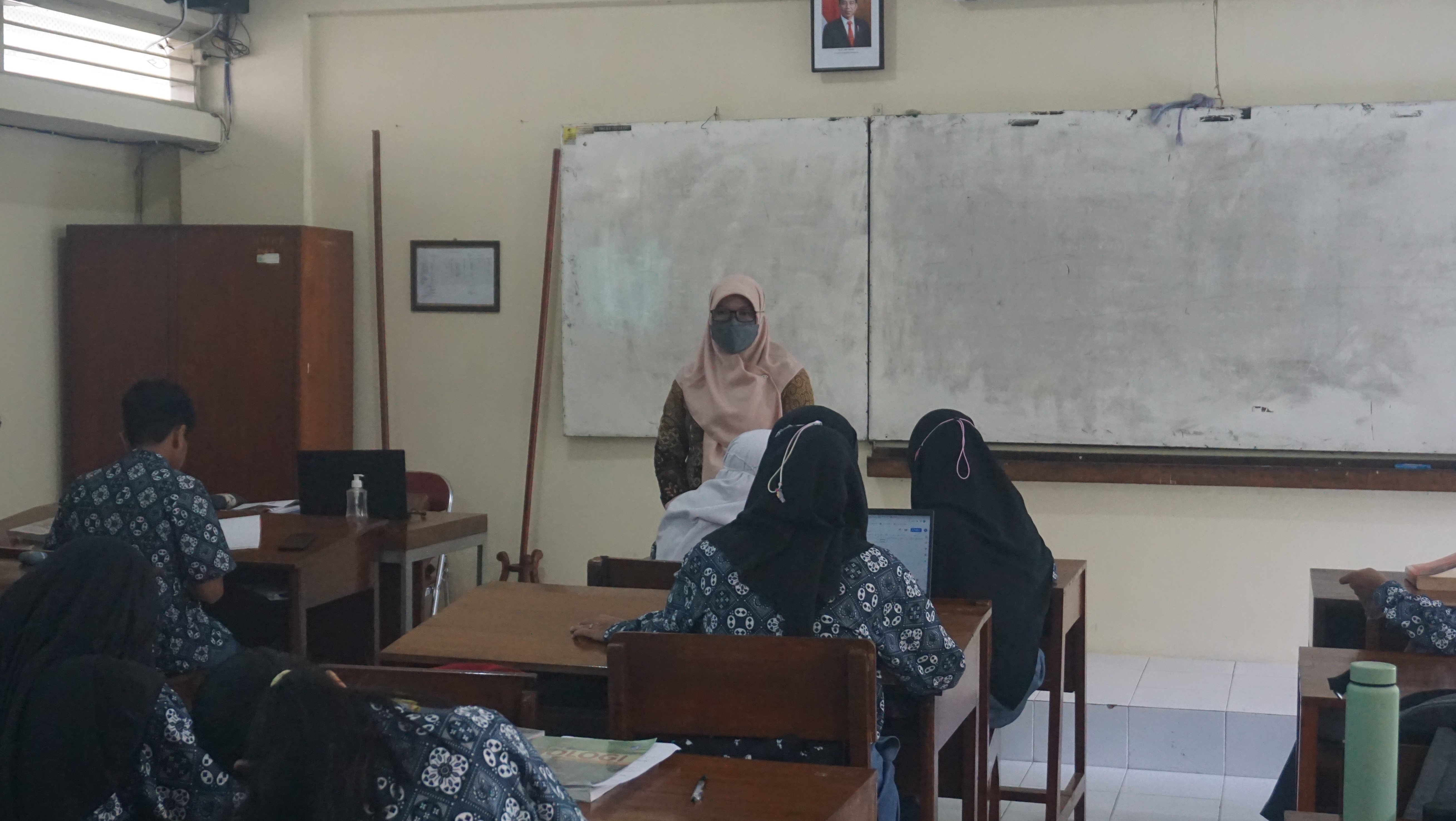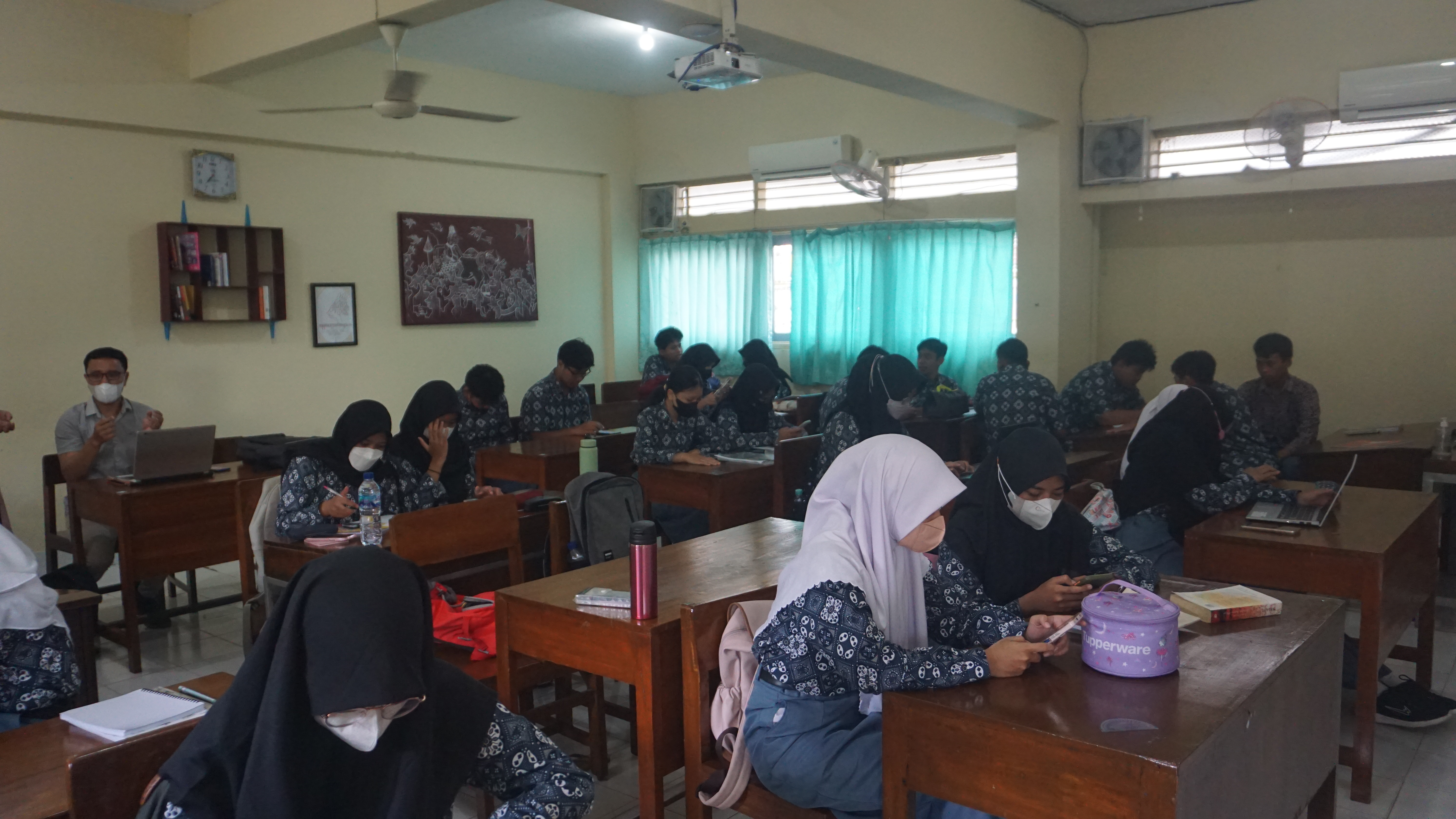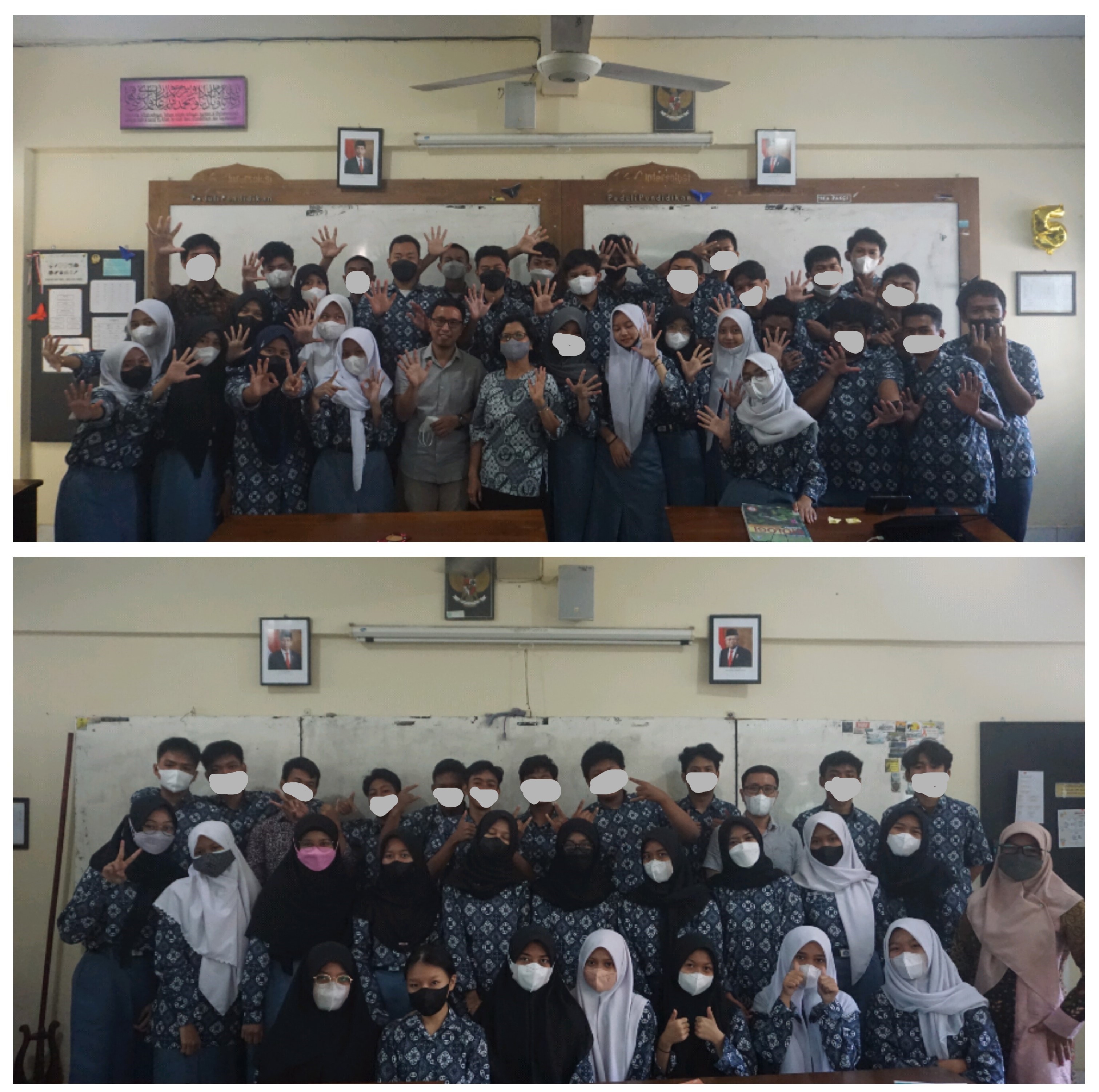Study Protocol: Using Video Testimonials as a School-Based Social Marketing Intervention in Adolescent Smoking Cessation Programs
Mohammad Eko Fitrianto, Basu Swastha Dharmmesta, Bernardinus Maria Purwanto
Social marketing
Social marketing intervention
Adolescent smoking
Smoking prevention
School-based program
Experimental study
Abstract
This protocol study intended to describe the examination process of emotion-based study and interpersonal relationship in context of adolescent smoking. We designed a school-based smoking cessation program as a social marketing intervention tool to influence high-school student behavior using a testimonial video. We stimulate participant empathy with hypothetical scenario to observe their reaction to the stimulus. Two main independent variables in this study are salience of need and attachment style. Experimental design in this study using 2 × 2 factorial design, with one control condition. Procedures start with participants were shown a testimonial video of an adolescent suffering due to smoking, and ended by asking the participants to imagine if such consequences were happening to their own peers. Video testimony was recorded in a high-definition format (full HD 1080p/60fps) using a Sony Alpha 6000. Video editing was performed using Camtasia Studio 2019 in mp4 format. The potential implications of this research suggest that schools, as organizations, can utilize a multimedia approach (e.g., video testimonials) to design comprehensive social marketing programs focused on peer relationships.
Before start
What should to prepare
- Study design
- Ethical clearance (study of conduct)
- Determine the manipulation level (for this study: Level of severity)
- Video testimonial production plan
- Audio & Video recording device (for video testimonial production)
- Research instrument development (integrated between study queries and video manipulation)
- Trivia questions
- Random sampling process plan
- Random assignment process plan
- Bias mitigation plan
- Manipulation check procedures
- Time schedule
- On the spot study monitoring plan
Steps
Phase I: Preparation
Study design
Decide to use control condition (variables and group control)
- To minimize the possibility of alternative answer, researcher must control the participants age and sex. Control condition may imply with this situation: participants and the actors are in the same age and participant will receive study manipulation that match with their gender.
- To create a benchmark and to compare to the experiment result, provide a control group. Participant in this group do not receive the experimental treatment.
Bias mitigation plan
- Gender bias mitigation
- Double-blind method
Provide ethical clearance
- To obtain a institutional ethical clearance is vary, due to administration procedures. Estimate it will take 4 weeks.
Determine the manipulation levels
Conduct Focus Group Discussion (FGD)
- Researcher decide what relevant information related to the manipulation development that will discussed in the discussion.
- To get more accurate information about health consequence of smoking, and to conceptualize the research manipulation, we conduct FGD at Lung Hospital located in Bantul, Yogyakarta
- We collect information about (1) adolescent patients who had experienced health problems due to smoking and (2) the level of suffering.
Conceptualize the level of suffering
- According to previous information, conceptualize the level of suffering in two level (light and severe suffering)
Video testimonials Production (experimental manipulation)
Video testimonial design
- Every video testimonial consisted of two parts. The first part was about a negative smoking consequence (salience of need), and the second consisted of the attachment style (attachment figure)
School permission.
- To obtain a school permission is vary, due to administration procedures. Estimate it will take 4 weeks.
- The school provides permission and lists the names of students who will participate as video models
Video testimonial production
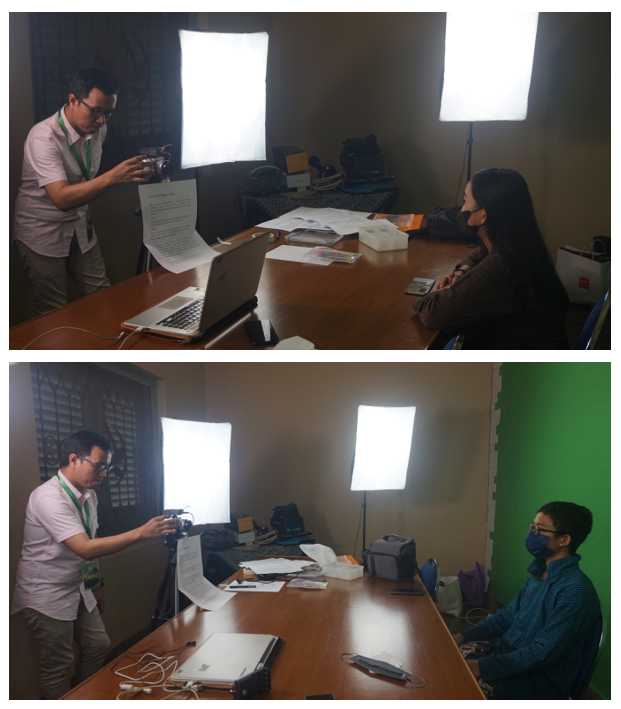
Video shooting notes
- To avoid psychological exhaustion and irrelevant messages, limit the video duration to around 1-1.30 minutes.
- We recommends to record the video in a high-definition format (full HD 1080p/60fps)
- Convert the video into common video format (i.e. *.mp4) and upload it to online video storage (i.e. youtube.com)
- Generating the link, and given a code to each link to make identification easier
- Please remind that, there will be 10 versions of video link according to number of conditions
- The entire video shooting process accompanied by a teacher
Video testimonial result
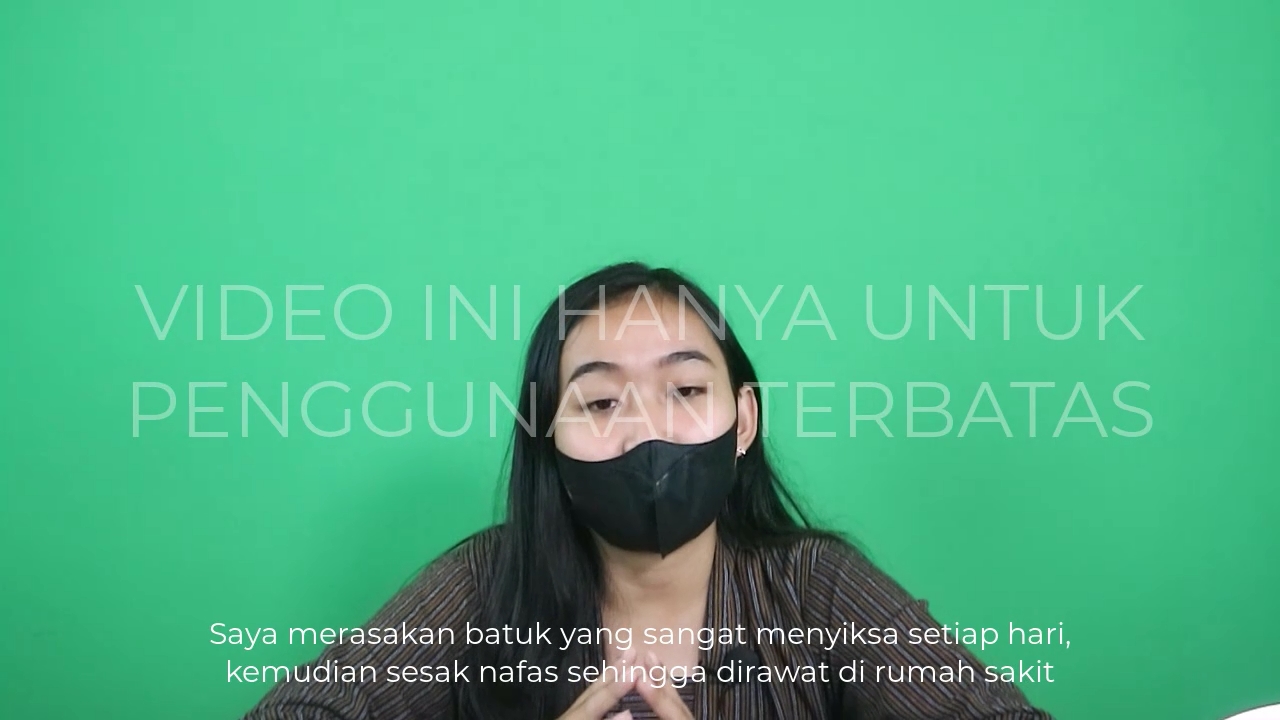
English translation: " I felt a very severe cough every day and shortness of breath until I was hospitalized "
Random sampling process procedures
- Random sampling procedures ensuring that every student had an equal chance of being selected as a participant.
Obtain list of active student.
- In this study, the school provide a list of an active student from two classes grade XI student.
Prepare the student name list for random assignment phase
- Due to this study conduct gender-matching procedures, please give a gender code followed after each name (e.g. M=Male, F=Female)
- Example: Alan Andreasen (M)
Random assignment procedures
- Input the name list into random assignment application, and let the software randomize the list. Set the group according to study design. In this study, we employed five groups that contains of experimental groups (with manipulation condition) and control group (no manipulation condition).
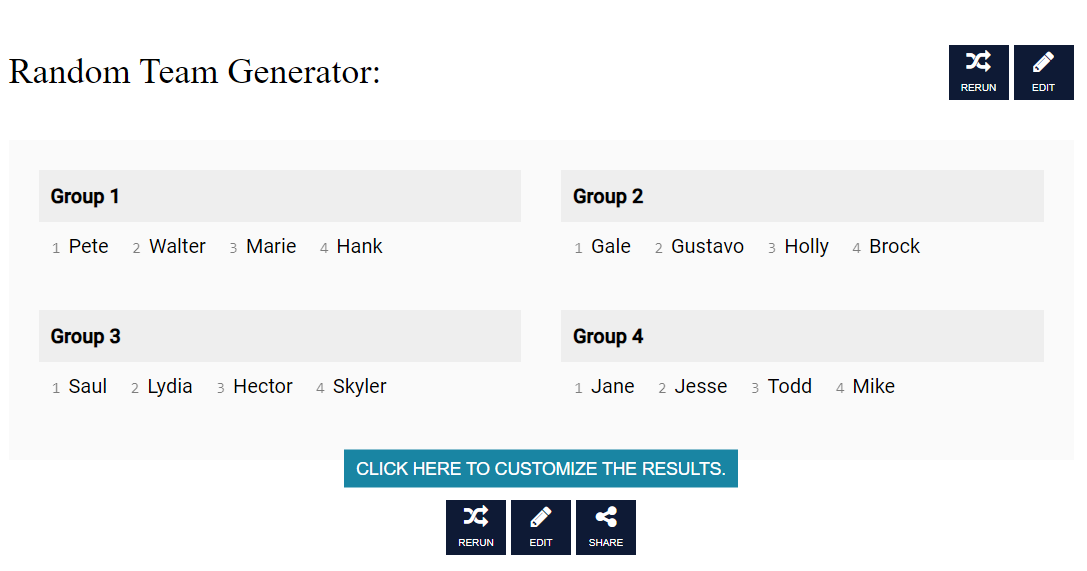
For example, we use random team generator from https://www.randomlists.com/team-generator
After the randomization process, we obtain a list of participant according to the group their belong.
Research instrument development
Prepare the TRIVIA question (for mitigating the covariates)
Prepare the main study question (study manipulation)
Prepare the manipulation check question
- Manipulation checks were conducted to ensure the success of the experimental manipulations and that the participants responded accordingly
Provide direct link to the treatment.
For example:
Link integration
Integrated link between participant's attribute and the research treatment
- This is a critical step. Be careful when integrated between participant's attribute (gender, group they belong, etc.) with the research treatment .
- There are ten versions of treatment, participant must accurate receive the link that he/she suppose to received.
- Errors in embedding links, resulted in participants failing to participate in the study.
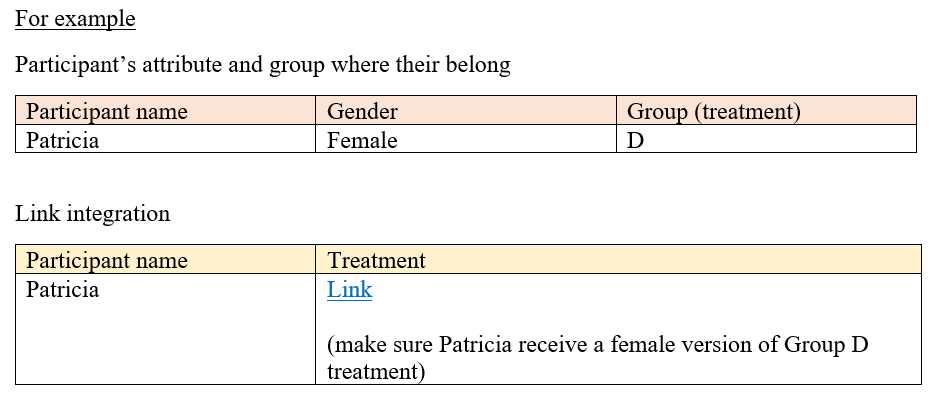
Compile the research instrument into ' The PDF File '
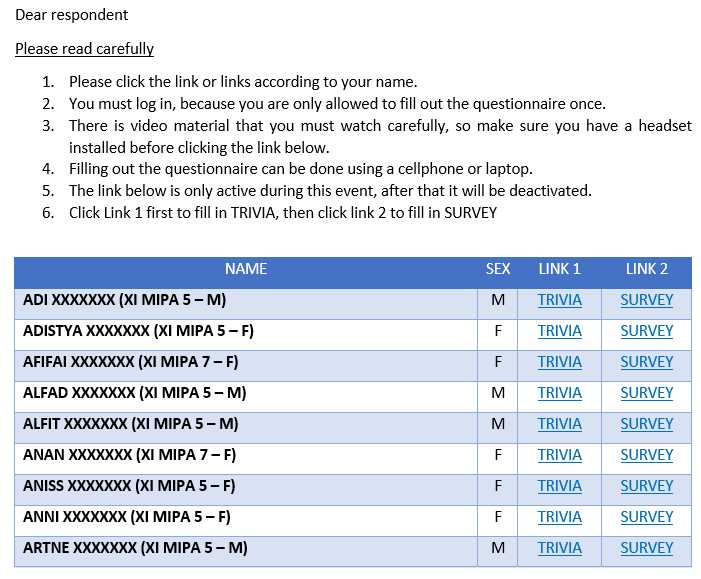
Bias mitigation procedures
- All the experiments were performed individually
- Each participant will receive unique link, and it direct to their manipulation according to random assignment process
- Double-blind method not allowed participant to identify the kind of other treatment, even they cant identify their own treatment
- This procedures also not allowed each group interact or diffuse each other
Obtain participant consent a day before the experimental study conduct
- One of the critical steps due to comply research ethics.
- The researcher can use a google form to collect and store the data online
Meet the experimenter (the homeroom teacher)
- Arrange a meeting with the teacher one day before the experimental study
- In order to achieve the experimental study goal, we need a help from homeroom teacher to deliver the procedures.
- The role of experimenter is very vital, such as to distribute the research instrument, reading the instruction, and giving a signal to start and stop the activity.
Phase II: The experimental study
Arrived at school and meet with the experimenter
- Meet the experimenter (the homeroom teacher) and giving a brief explanation about the study
- Optional, if the study is conduct in the morning : Noted that it is very common school in Indonesia start their learning process at 06.30 AM. Please arrived before the the learning process will begun
Handling the mortality rate
- Before the study started, make sure to ask the homeroom teacher about the student (or participant) who were unable to take part in the study
- This part is important related to documenting the mortality rate and check if the random assignment works well.
- In our case, 15 students could not participate in the research and they are well distributed from all groups. This means random assignment works well.
Instrument distribution
- The pdf file distributed through class group chat (via WhatsApp group)
Answer the Trivia Question (covariate mitigation)
- Experimenter (the teacher) give the signal to start answer the trivia
Participant carefully listen a part of research manipulation
#尊敬的用户,由于网络监管政策的限制,部分内容暂时无法在本网站直接浏览。我们已经为您准备了相关原始数据和链接,感谢您的理解与支持。
<iframe title="SMAN 8 Yk File 003" src="https://www.youtube.com/embed/sOs_twtMIA4" height="487" width="866"></iframe>
Note. A portrayed of a student when participate in the experimental study
Phase III: Post experimental study
Data check and validation
- After participant submitted their response, the answer will be automatically stored at the system
- Data validation related to check the mortality rate, or participant that failed to participate in this study (i.e. not finished to answer the question, or failed to understanding the instruction)
- In our case, we found 1 participant incorrect to join the group where he/she should be belong (e.g. wrong click the link)
Data compilation and preliminary analysis
- Reminds the ten versions of data, be careful in compilation process
- Reminds the code to help identify the group (i.e. 1=Male, 2=Female, or A, B, C, D, and E for group of treatment)
- Compile the data carefully in common statistical software format (i.e. SPSS)
Manipulation check
- Conduct a manipulation check to ensure there is a significant difference between level of treatment (i.e. light vs severe condition)
- Significant difference between level of treatment shown the effectiveness of the treatment
